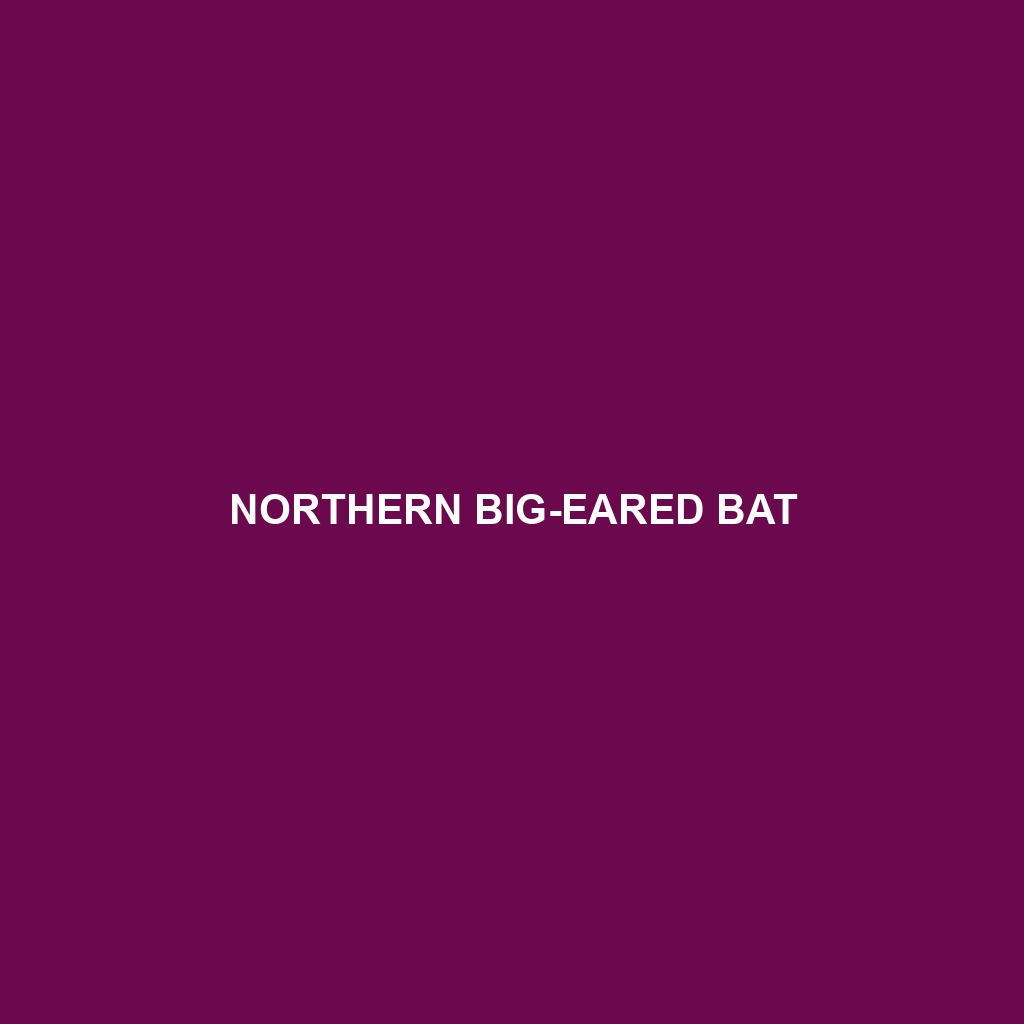Northern Big-eared Bat
Common Name: Northern Big-eared Bat
Scientific Name: Corynorhinus townsendii
Habitat
The Northern Big-eared Bat is primarily found in the western United States, ranging from the Pacific Coast through the Rocky Mountains. Their preferred habitats include caves, abandoned mines, and wooded areas near water sources. This species thrives in environments with ample roosting sites and high insect populations, commonly ranging from lowland valleys to mountainous regions.
Physical Characteristics
This medium-sized bat typically measures 8 to 10 inches in wingspan and weighs between 6.5 to 12 grams. Its most notable feature is its exceptionally large ears, which can be over 3 centimeters long. The fur is soft and dense, usually colored a mix of light brown and gray, with paler underparts. The Northern Big-eared Bat also has a distinctive facial structure with prominent noseleaf structures aiding in echolocation.
Behavior
The Northern Big-eared Bat is primarily nocturnal, emerging after dusk to feed. They are known for their unique flight patterns, often flying slowly and methodically to capture insects mid-flight. This species employs echolocation for navigation and hunting, emitting high-frequency sounds that bounce off objects, helping them discern their surroundings efficiently.
Diet
The diet of the Northern Big-eared Bat mainly consists of moths, beetles, and other flying insects. They target various species of moths, which account for a significant portion of their diet. This species is known to forage in open areas, utilizing their large ears to detect prey in the dark, making them essential for natural pest control.
Reproduction
The reproductive habits of the Northern Big-eared Bat typically involve breeding during the fall, with females giving birth to a single pup in late spring or early summer. Maternity colonies can be found in caves or other sheltered locations, where mothers will nurse their young until they are capable of flight and foraging on their own.
Conservation Status
The Northern Big-eared Bat is currently classified as vulnerable due to habitat loss and disturbance of roosting sites. Efforts are underway to monitor their populations and protect their critical habitats to prevent further decline.
Interesting Facts
This bat species has a specialized flight style that maximizes maneuverability, allowing it to navigate through dense forest environments. Additionally, they are known for their long lifespans, with some individuals living over a decade in the wild.
Role in Ecosystem
The Northern Big-eared Bat plays a crucial role in its ecosystem by controlling insect populations. Their feeding habits help to maintain the balance of various insect species, thus contributing to the overall health of their habitats. They also serve as prey for larger predators, further embedding them in the food web.
